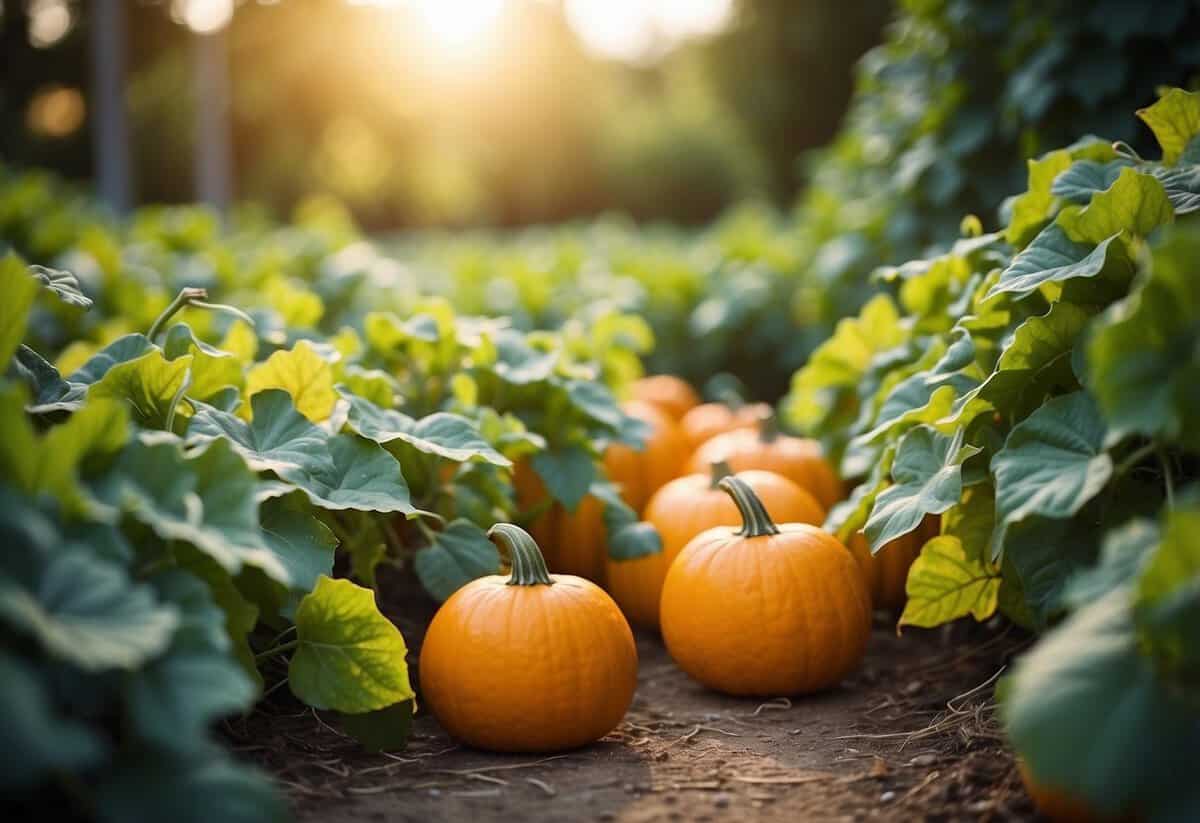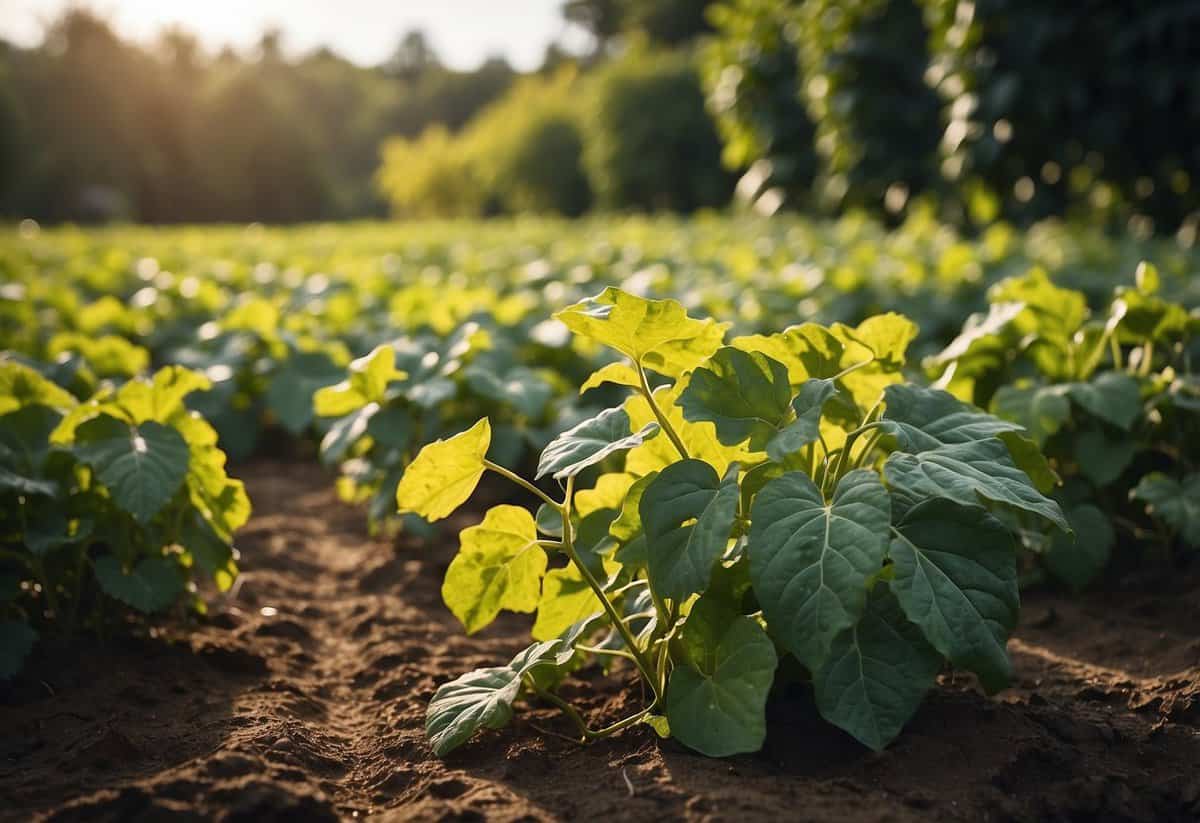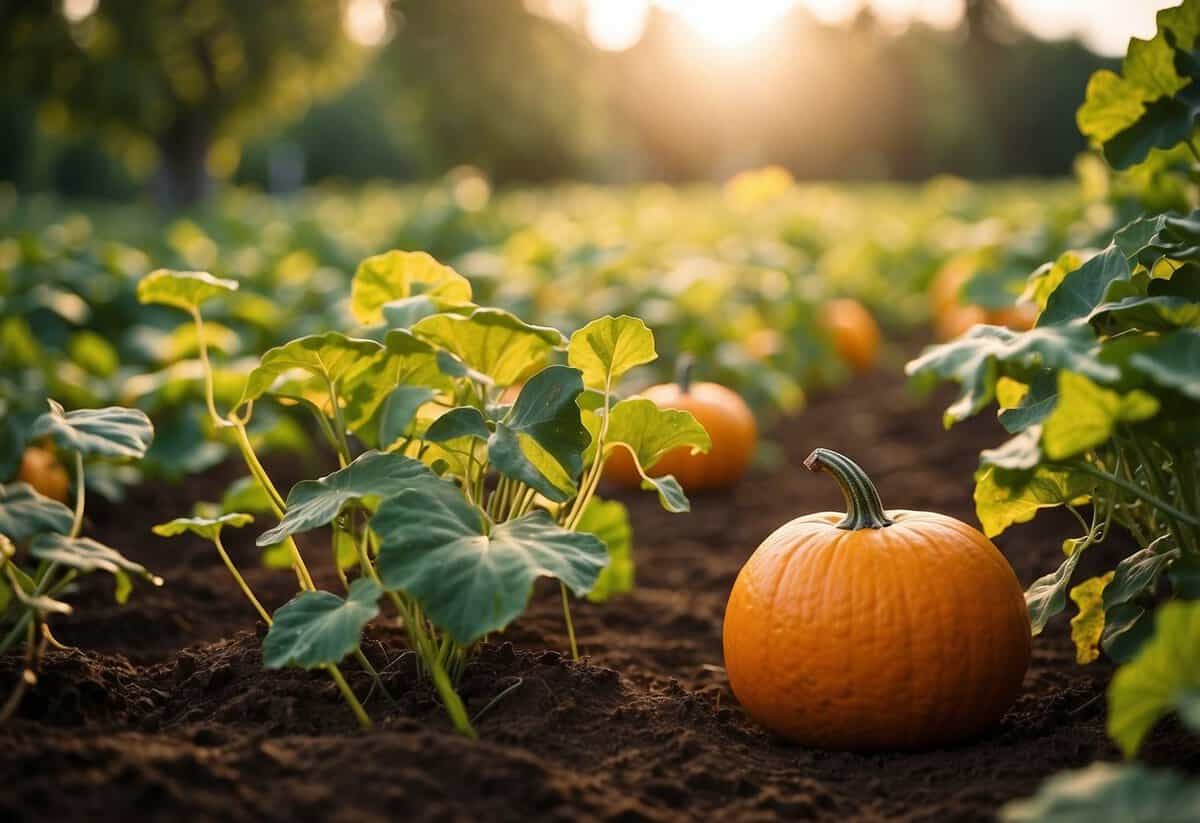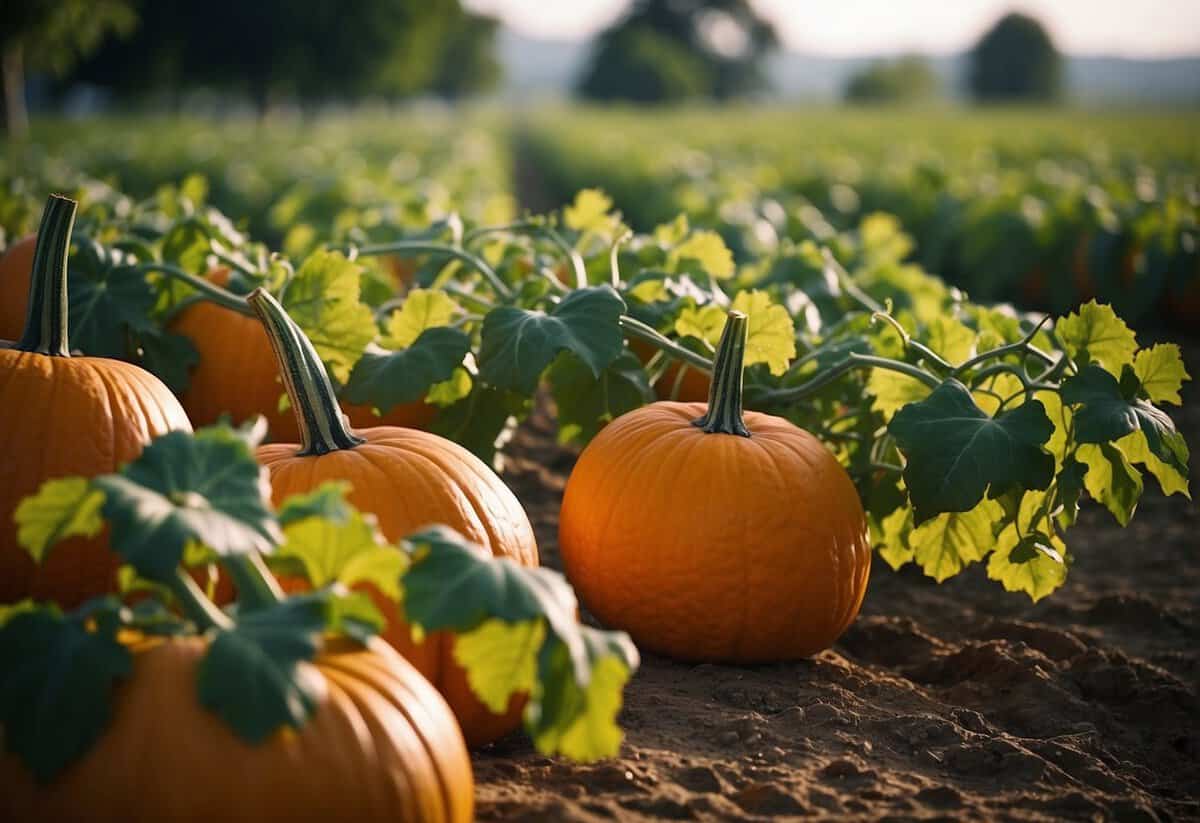Pumpkin Garden Tips: Grow Your Best Patch Yet
Growing pumpkins can be a rewarding and enjoyable experience for gardeners of all levels. Whether you’re aiming to carve the biggest jack-o’-lantern or simply want to grow a few tasty varieties for pies, it’s important to understand the basic needs of these vibrant plants. With the right tips and care, you can have a thriving pumpkin patch in no time.

You don’t need a green thumb to see amazing results. By knowing when and how to plant, as well as how to nurture your pumpkins through their growing stages, you’ll set yourself up for success. Let’s explore some helpful tips to ensure your pumpkin plants flourish and produce beautiful fruits.
1) Choose the Right Pumpkin Varieties

Picking the right pumpkin variety is key to a successful pumpkin garden. If you want to make Jack-O-Lanterns, go for Jack-O-Lantern pumpkins or Howden pumpkins.
For tasty pies and soups, try the Butternut squash. It’s known for its sweet and nutty flavor. If you’re limited on space, consider growing a smaller variety like Sugar Pie pumpkins.
2) Prep the Soil with Compost

Mix compost into your garden soil to give pumpkins the nutrients they need. Start by digging a hole one foot deep and 2 to 3 feet wide.
Add compost to fill the hole, mixing it well with the soil. This creates a rich environment for the plants. Pumpkins love nutrient-rich soil, so don’t be shy with the compost.
Using rotted manure or kitchen waste can also help improve soil quality. For the best results, make sure to work the compost into the soil thoroughly.
For more detailed information, visit this guide on soil preparation for pumpkin plants.
3) Plant After Last Frost Date

It’s important to plant your pumpkins after the last frost date. Frost can damage seedlings and impact their growth.
Wait until the weather is consistently warm. Night temperatures should be above 55°F (13°C).
By planting after the last frost, you give your pumpkins the best chance to thrive. For more details, check out this guide to growing pumpkins.
4) Ensure Proper Spacing

Spacing your pumpkin plants correctly is important for healthy growth. For vine and semi-bush varieties, space the holes 5-6 feet apart. If you’re planting bush or dwarf varieties, place the holes 2-3 feet apart.
Keep rows 10-15 feet apart for larger varieties. This helps maximize space and sunlight exposure. For general spacing, leave about 3-6 feet between each plant in all directions.
5) Water Consistently

Pumpkins need about one inch of water each week. Keep the soil consistently moist to ensure healthy growth.
Use deep watering methods to encourage strong roots. Water in the evening and focus on the base of the plant.
Avoid getting water on the leaves to prevent diseases. Adjust your watering schedule based on weather conditions. Learn more about watering pumpkins.
6) Mulch to Retain Moisture

Mulch is great for keeping your pumpkin plants happy. It helps keep the soil moist, which pumpkins love. By reducing evaporation, mulch ensures your plants get the water they need.
Using mulch can also help prevent weeds. Weeds compete with your pumpkins for water and nutrients. Adding a layer of mulch around your plants can make a big difference in their growth and health.
For the best results, try using options like coco fiber mulch or ground cover. These materials are effective at retaining moisture and keeping your pumpkin patch thriving.
7) Provide Adequate Sunlight

Pumpkins love the sun. Make sure your plants get at least 6-8 hours of direct sunlight each day. This encourages healthy growth and plenty of flowers.
Choose a sunny spot in your garden. Pumpkins need bright light to thrive. If you’re in a region with less sunlight, consider additional lighting.
Watch for seasonal changes in sunlight. Adjust your garden setup if needed to ensure your pumpkins get enough light all year round.
8) Watch for Pests like Squash Bugs

Be on the lookout for squash bugs. They can cause a lot of damage to your pumpkin plants. Early detection is key. If you spot them, pick them off by hand and drop them into soapy water.
Using row covers can help keep squash bugs away from your plants. Also, consider planting companion plants that naturally repel these pests. Neem oil sprayed directly on the bugs and leaves can also disrupt their breeding cycle, ensuring your plants stay healthier.
9) Hand-Pollinate if Necessary

Sometimes your pumpkin plants might need a little help with pollination. This is when you step in to hand-pollinate. To do this, you first need to identify the male and female flowers. Male flowers have a long, slender stem, while female flowers have a small swelling at the base.
Use a small paintbrush or cotton swab to transfer pollen from the male flower’s stamen to the female flower’s pistil. If done correctly, this helps ensure a healthy pumpkin harvest. If you have any doubts, you can find more tips at Gardener’s Path.
10) Support Growing Vines

Supporting your pumpkin vines helps them grow strong and produce healthy fruits. A trellis is a great way to keep the vines off the ground.
An A-frame or garden arch can work well. You can also use a chain-link fence or lattice.
Make sure to set up the support structure before planting. This way, the vines will have something to climb as they grow.
Starting Your Pumpkin Garden

When starting your pumpkin garden, it’s essential to choose the best pumpkin varieties for your space and needs and to prepare the soil properly. Doing these two things will set your pumpkins up for success.
Choosing the Right Pumpkin Varieties
Selecting the right pumpkin variety is crucial. Different pumpkins serve different purposes, from carving to baking to decorative. If you have limited space, consider smaller varieties like Jack Be Little or Baby Boo. For larger spaces and those interested in giant pumpkins, Atlantic Giant is a great choice.
It’s important to think about the climate in your area. Some pumpkins need a long growing season, around 130 to 160 days. Check the specific needs of the variety you choose and ensure it matches your region’s growing conditions.
Ask local gardening centers for recommendations or look up varieties that are known to grow well in your area. This will increase your chances of a bountiful harvest.
Preparing the Soil
Pumpkins thrive in rich, well-drained soil. Start by removing weeds and any debris from your planting site. This step helps prevent pests and diseases. Pumpkins prefer soil with a slightly acidic to neutral pH, usually between 6.0 and 7.5.
Adding compost or well-rotted manure into the soil enriches it with nutrients. Pumpkins are heavy feeders and will benefit from these added nutrients. Make sure to mix them thoroughly into the soil.
Watering is also key. Make sure your soil drains well but retains enough moisture. Water your pumpkins regularly, especially during hot and dry periods, but avoid water pooling around the plants.
By focusing on these steps, you’ll give your pumpkins the best start possible.
Maintaining Optimal Growth

To ensure your pumpkins have the best chance to thrive, focus on proper watering techniques and careful management of pests and diseases. These practices are key to growing strong, healthy plants that produce big, beautiful pumpkins.
Watering Techniques
Pumpkins need a lot of water, as they are made up of almost 90% water. Water deeply about once a week, ensuring the soil is moist to a depth of 8-10 inches.
Avoid watering from above to reduce the risk of diseases; instead, use drip irrigation or water your plants at ground level. Be cautious not to water directly at the base of the plant, which can lead to stem rot.
During hot summer weather, increase watering frequency but maintain the depth of moisture. Mulching around your plants helps retain soil moisture and keeps the roots cool. Keep the soil consistently moist but not waterlogged to promote optimal growth.
Managing Pests and Diseases
One common pest is the squash bug. Regularly inspect your plants and remove any visible bugs and eggs. Insecticidal soap can help manage infestations.
Powdery mildew is a frequent fungal disease affecting pumpkins. Ensure good air circulation by spacing plants appropriately and removing any affected leaves. Use fungicides if necessary.
Another issue to watch for is downy mildew. It spreads quickly, especially in humid conditions. Apply appropriate fungicides and remove infected leaves.
Keep your garden free of debris and weeds, which can harbor pests and diseases. Crop rotation is also beneficial, as it reduces the likelihood of pests and diseases recurring season after season.
Regular monitoring and proactive care will help keep your pumpkin plants healthy and productive.
Harvesting and Storing Pumpkins

To get the best results from your pumpkin garden, you need to know the right time to harvest and the best ways to store them. This ensures your pumpkins stay fresh for as long as possible.
When to Harvest Pumpkins
Harvest your pumpkins before the first frost occurs to avoid damage. Look for a deep, solid color and a hard rind. These signs mean the pumpkin is ready. Cut the stem with a sharp knife, leaving about 3-4 inches attached. This helps to prolong storage life by preventing parts of the pumpkin from rotting. Avoid carrying pumpkins by their stems as they can break, potentially leading to rot.
Proper Storage Methods
Start by curing the pumpkins. Place them in a warm area with temperatures between 80-85°F (26-29°C) for about two weeks. This hardens the skin and helps prevent rot. During curing, ensure good air circulation.
After curing, store pumpkins in a cool, dry place. Aim for temperatures around 50-55°F (10-13°C). Keep them out of direct sunlight and spaced out to avoid moisture buildup. Clean the skins with soapy water and a bleach solution (1 part bleach to 10 parts water) to kill pathogens. This helps in maintaining a longer shelf life.
By following these steps, you ensure your pumpkins last through the season.







